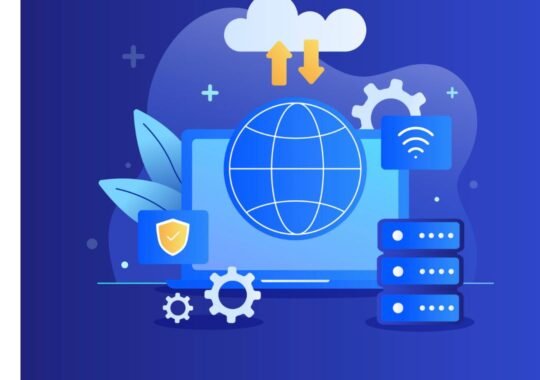The digital age is upon us, and with it comes an unprecedented opportunity to elevate how ministries share and teach their curriculum. Gone are the days when printed materials, physical media, and cumbersome hardware dominated religious education. Today, there is an imminent need for innovative approaches that streamline the process of curriculum distribution, catering to a generation that is increasingly tech-savvy and hungry for interactive learning experiences.
The Obsolete Methods of Curriculum Delivery
Traditionally, ministries have relied on various methods to distribute their curriculum. This often involved using USB, creating physical copies of study materials, transporting them to multiple locations, and facing the inevitable delays and costs associated with such processes. The limitations of these outdated systems posed a barrier to the timely and effective dissemination of knowledge. Additionally, they needed more flexibility for on-the-fly updates or customizations to cater to specific audiences or locations, leading to a more dynamic educational paradigm.
Digital Platforms as a Catalyst for Change
Innovative content delivery services have emerged as a modern solution to the challenges of curriculum distribution in ministries. The benefits of linking accounts from renowned curriculum providers — such as the Orange curriculum platform — to the distribution system are manifold. This provides instant access to a wealth of resources and allows for real-time updates and content synchronization across multiple service venues, bringing a new level of ease and reliability to religious education.
Such systems offer quick and seamless playlist creation capabilities from a central computer, eliminating the need for physical storage devices and reducing the preparation time to a mere fraction. The swift way content can be distributed to various TVs or display systems throughout an organization heralds a new era in educational efficiency.
Moreover, integrating analytics tools into these digital platforms enables ministries to track usage patterns and assess the effectiveness of different educational materials, facilitating data-driven decision-making and continuous improvement of curriculum delivery. By fostering collaboration and sharing among educators, these platforms create a dynamic ecosystem where best practices can be exchanged, and innovative teaching methods can be explored. As ministries strive to modernize their educational systems and adapt to learning needs, digital platforms catalyze transformative change, driving efficiency, accessibility, and effectiveness in curriculum distribution and delivery.
Engaging the Congregation with Digital Media
The engagement that digital media brings to educational settings is unparalleled. It not only holds the attention of learners across various age groups but does so in a way that promotes active participation and retention of the material. The interactivity afforded by digital solutions invites a level of personal connection and immersion that static reading materials cannot provide. Furthermore, this methodology aligns perfectly with the expectations of younger congregants raised in a digital world and long for learning approaches that speak their language.
Moreover, digital media offers the flexibility to cater to diverse learning styles and preferences, allowing congregants to engage with religious teachings in ways that resonate with them. The multimedia nature of digital platforms enables the integration of visual aids, audio recordings, and interactive elements, enriching the learning experience and fostering a more profound understanding and connection to the material. As congregations increasingly embrace technology as a tool for spiritual growth and community engagement, adopting digital media becomes a necessity and a strategic opportunity for religious institutions to connect with and inspire their members.
Advantages of Integrating Digital Distribution
Adopting a digital platform for curriculum distribution brings numerous advantages to the table, including:
- Centralization of Resources: A unified library of materials simplifies management and access to content.
- Instantaneous Updates: The latest teachings and materials are available immediately, ensuring all locations are synchronized.
- Easy Customization: Tailor content to the specific needs of different groups within the congregation without logistical headaches.
- Scalability: The system grows with ministries, efficiently catering to increasing services or locations.
Streamlining Operations and Eco-Friendliness
With the shift to digital resources, ministries are benefitting from streamlined operations. The hefty hours previously dedicated to preparing, duplicating, and distributing materials can now be redirected toward more substantive educational and religious activities. Besides operational efficiency, the switch represents a step towards environmental responsibility, significantly reducing the paper and plastic waste associated with traditional media.
Multimedia: The Modern Language of Education
Digital platforms integrating multimedia resources can convey complex theological concepts clearly and captivatingly. This enhances the teaching process and ensures that the ministry’s message is presented in a format that resonates with a contemporary audience. The ability to include videos, music, and interactive content creates a rich, multimodal educational experience that appeals to a wide range of learning styles.
Future-Ready Ministries
As ministries prepare for the needs of future congregations, selecting a comprehensive and adaptable digital distribution platform is critical. This choice should accommodate the current size and structure of the ministry and be flexible enough to grow and evolve. Technology and faith can go hand in hand, ushering in a bright future where education and inspiration are more accessible and impactful than ever before.
Conclusion: The Digital Reformation of the Ministry of Education
The move to digital curriculum distribution systems marks progress in ministry education. This reformation embraces the possibilities of technology, enabling a deeper connection between the ministry’s teachings and its congregation. With such systems, the message of faith can be propagated with unprecedented efficiency, relevance, and vigor, keeping the spirit of worship alive in an ever-changing world.
In conclusion, the digital revolution in ministry curriculum distribution is not just about adopting new technologies; it’s a fundamental step towards a more enlightened and empowered future for religious education. It’s an affirmation that the spiritual education of the congregation and the stewardship of ministry resources can be enhanced profoundly through the judicious use of innovative solutions.





